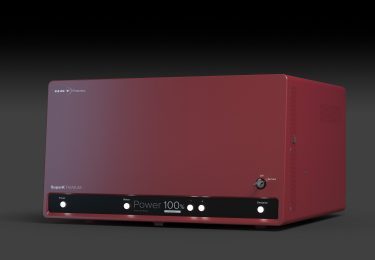This was demonstrated in a collaboration between Lund University, Norsk Elektro Optikk, and FaunaPhotonics using the NKT Photonics SuperK FIANIUM supercontinuum light source. The new approach also has potential applications in other areas of environmental monitoring, such as sensing of vegetation, gases, and particles.
The insect decline threatens our ecosystems
Insects play a vital role in our ecosystems by aiding in crop pollination, decomposition, and nutrient recycling. However, we are witnessing a decline in both the population of insects and the diversity of species.
The main reasons for their disappearance are habitat loss, pesticide use, and climate change. Across the planet, we implement strategies to protect insects and their habitats and follow up to see if we succeed.
“Halt biodiversity loss” is one of the United Nation’s World Goals. But how do you count and classify free-flying insects?
How do you count free-flying insects?
Imagine standing in a meadow with a butterfly net. Now, catch and count all insects within a square kilometer and determine all species. Not so easy. Traditionally, we monitored insects by trapping and analyzing them, which is time-consuming and expensive.
Machine vision and distributed sensors were also used for insect surveillance. However, challenges such as focus issues and motion blur arise due to the fast-moving insects and the large areas that need to be monitored. Instead of relying on images, insects can be categorized based on the sounds they make when flying, which helps overcome the challenges of focus and motion blur.
The team in Lund, Sweden, has developed a hyperspectral lidar (Light Detection and Ranging) solution that can count insects, resolve their wing beats in time, and at the same time, resolve spectral interference in their submicron wings to distinguish species.
Use wing interference patterns to classify insects
Hyperspectral lidar emits laser light to create a 1D, 2D, or 3D map where each point within the probe volume contains backscattered intensity from numerous wavelengths of light. In the case of insect monitoring, a 1D transect is typically used. The insects pass through a stationary laser beam that records the distance to the insect and the reflected spectrum.
Insect wings are thin membranes. When the laser light hits the insect wing, some light is reflected from the first surface, and some is reflected from the second surface after passing through the wing. This creates patterns called wing interference patterns. Each species has both specific wingbeat frequency and also wing interference pattern that can be used to tell them apart. This makes it possible to differentiate hundreds of free-flying insect species in their natural habitat.
The research group has invented a device that can measure the heterogeneity of the wings as well as wing thickness with a 10 nm precision. They combined it with models that describe how wings move to get a brand-new way to identify insects.
Their current method can detect all insects over hundreds of meters with a speed of 600 hyperspectral echoes/second.

Infrared lidar and spectroscopy ensure higher accuracy
To work around optical defocusing, insects can be classified based on wingbeat frequency and overtone spectra in the frequency domain. Resonant backscatter from insect wings produces fringed spectra that increase species specificity.
The research group combined spectroscopy with infrared lidar to collect small features from insects over long distances. They used a new elastic hyperspectral Scheimpflug lidar to resolve flashes from insect wings in terms of range, time, and wavelength. Compared to traditional lidar systems, a Scheimpflug lidar offers a better focus and accuracy across a wider field of view.
Also suitable for environmental monitoring
As we have seen, hyperspectral lidar has the potential to revolutionize insect surveillance and could also find applications in other fields of environmental monitoring, such as vegetation canopy analysis and atmospheric particle and gas sensing.
Learn how the system works
If you want to learn how the system works, get all the details in the white paper “Remote nanoscopy with infrared elastic hyperspectral lidar.”



